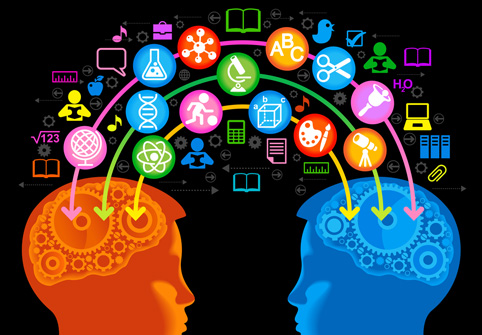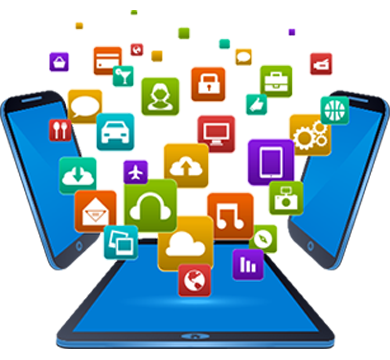
By Gartner
1. Adaptive Learning
Adaptive learning is a concept that traces its roots back to at least the 1950s, but the ability to capture learner data through online learning has provided a breakthrough. True adaptive learning is a type of crowdsourcing and big data collection. The real value of adaptive learning lies in the metadata attached to each learning “morsel,” which must then be combined with enough empirical data of students trying to master the topic to allow personalized learning. It is extremely valuable in designing the pedagogy of the future.
2. Adaptive E-Textbooks
Unlike traditional print materials, e-textbooks can be edited to include up-to-date information, be assembled or disassembled, or include content from other sources and social interaction. Adaptive e-textbooks add the element of tracking student interaction with the text, and adapting to the learning style. E-textbooks are the first key step of going from analog to digital education.
3. CRM
Customer relationship management (CRM) is now a widely recognized tool for tracking and managing relationships with constituents, including prospective and current students, parents, alumni, corporations, benefactors and other friends of the institution. However, institutions are grappling with the difficulties of standardizing and integrating the institutional data to achieve success with these solutions, and to enable rapid and informed decision making on their campus.
4. Big Data
Big data in education is associated with collecting vast amounts of data from the digitized activities of students, parents, faculty and staff, transforming that into information, and producing or recommending actions aimed at improving institution outcomes. Big data in higher education has been around for decades, mainly focused on research. Now, it is a very promising technology-based strategic capability that has the possibility to improve the whole education ecosystem.
5. Sourcing Strategies
Not a technology in itself, sourcing strategies represent a collection of technologies and vendor services, from hosting to cloud, homegrown to open source, to subscription models for acquiring software/hardware capabilities. A sourcing strategy is a set of scenarios, plans, directives and decisions that dynamically define and integrate internal and external resources and services required to fulfill an enterprise’s business objectives. Strategic sourcing helps IT to focus from administrative transactions and operational support toward activities that enable differentiation and innovation for the institution.
6. Exostructure
Exostructure strategy means acquiring the critical capability of interoperability as a deliberate strategy to integrate the increasing numbers of partnerships, tools and services in the education ecosystem. When done right, an exostructure approach enables institutions to leverage services from the cloud, rather than having to bring them inside the campus walls. Enabled by standards, it can allow the institution to adapt faster. With the increasing interdependencies in the education ecosystem, Gartner sees it rising in importance for at least the next decade. The future belongs to exostructure rather than to infrastructure.
7. Open Microcredentials
Microcredentials in the form of various badges or points have existed for some time in digital social environments in general, and in learning environments in particular. A key problem is that these environments are proprietary, which makes it difficult to display achievements outside of them. The aim of open microcredentials is to remedy that problem. For education institutions, issuing open microcredentials is a low-cost, high-value, technology-based capability that will provide more value and motivation to students. Open microcredentials is still relatively immature as a technology, but it is gaining traction in the education community. Gartner sees it as a clear strategic technology with a relatively small investment involved, thereby making it a low-hanging fruit with good ROI.
8. Digital Assessment
Assessment within education is in itself a vast and complicated area. Digital assessment is ultimately about being able to do any assessment digitally, to remove the need for physically tethered as well as human-proctored tests and improve modes of testing, grading and data analysis. The first-level application of digital assessments is to increase trust in online education by applying identification mechanisms, such as keystroke identification or cloud-based face recognition. Digital assessment is a very practical technology with a clear high-level goal, but with many problems in the implementation. However, good digital assessment is a necessity for trustworthy and scalable online or hybrid (digitalized) education, and will remain a strategic technology until it is solved.
9. Mobile
Mobile is a popular term for pervasive access via many types of devices. Mobile is not simply a synonym for mobile smartphones or tablets. Mobile in education includes use in all aspects of the academy administration, education and research. However, the domain is maturing surprisingly slowly. Inhibitors still include smartphone cost, device limitations (such as battery life), the development of m-learning course materials, lack of skills and the wide diversity of mobile devices. Education CIOs will need to treat mobile as a strategic technology for several years
10. Social Learning
Social learning gives learners the ability to establish a presence or social profile that reflects their expertise and interest; to create, discuss, share and capture learning content as learning objects; to organize and find learning objects from a variety of sources, such as search or peer ratings; to interact with peers in their social networks and be able to reach beyond their networks to other trusted sources of information; to engage in experience-based learning exercises; and to receive real-time online coaching and support.
The experience from massive open online courses (MOOCs) shows the importance of “social” in learning platforms and is influencing the acceptance of social learning platforms. However, a significant number of faculty and students prefer to use open social platforms such as Google Sites or Facebook to complement traditional learning-management systems (LMSs) rather than the now-built-in social features in the learning platforms. Vendors and institutions are still trying to figure out the perfect mix in the learning stack.







